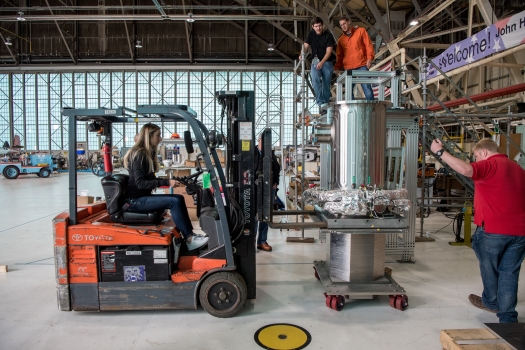 The US National Aeronautics and Space Administration (NASA) is to month start testing uranium-fuelled Stirling engines for use in possible future missions to Mars.
The US National Aeronautics and Space Administration (NASA) is to month start testing uranium-fuelled Stirling engines for use in possible future missions to Mars.
NASA’s Space Technology Mission Directorate (STMD) has provided multi-year funding to the Kilopower project, and testing is due to start in November and continue until early 2018. NASA has formed a partnership with the Department of Energy’s (DOE) Nevada National Security Site to appraise fission power technologies.
“The Kilopower test programme will give us confidence that this technology is ready for space flight development. We’ll be checking analytical models along the way for verification of how well the hardware is working,” explained Lee Mason, STMD’s principal technologist for Power and Energy Storage at NASA Headquarters.
NASA’s Glenn Research Centre in Cleveland has managed all phases of the Kilopower Project, from designing and building the hardware, with contributions from NASA’s Marshall Space Flight Centre in Huntsville, Alabama, through developing the test plan and operating the tests. The Y12 National Security Complex at the Oak Ridge National Laboratory is providing the reactor core.
“A space nuclear reactor could provide a high energy density power source with the ability to operate independent of solar energy or orientation, and the ability to operate in extremely harsh environments, such as the Martian surface,” noted Patrick McClure, project lead on the Kilopower work at the Los Alamos National Laboratory.
The prototype power system uses a solid, cast uranium-235 reactor core, about the size of a paper towel roll. Reactor heat is transferred via passive sodium heat pipes, with that heat then converted to electricity with Stirling engines.
NASA has flown a number of missions powered by radioisotope thermoelectric generators (RTGs) over the past 50 years, including onboard the two Viking Mars landers, the Curiosity rover now at work on Mars, the Apollo expeditions to the moon, and the New Horizons probe to Pluto and beyond. RTGs produce electricity passively with no moving parts, using the heat from the natural decay of their radioisotope heat source.
“What we are striving to do is give space missions an option beyond RTGs, which provide a couple hundred watts or so,” Mason said. “This new technology could provide kilowatts and can eventually be evolved to provide hundreds of kilowatts or even megawatts of power."
The Kilopower hardware will undergo a full-power test lasting some 28 hours.
Photo: NASA is to start testing uranium-fuelled engines this month (Credit: NASA Glenn Research Center)






